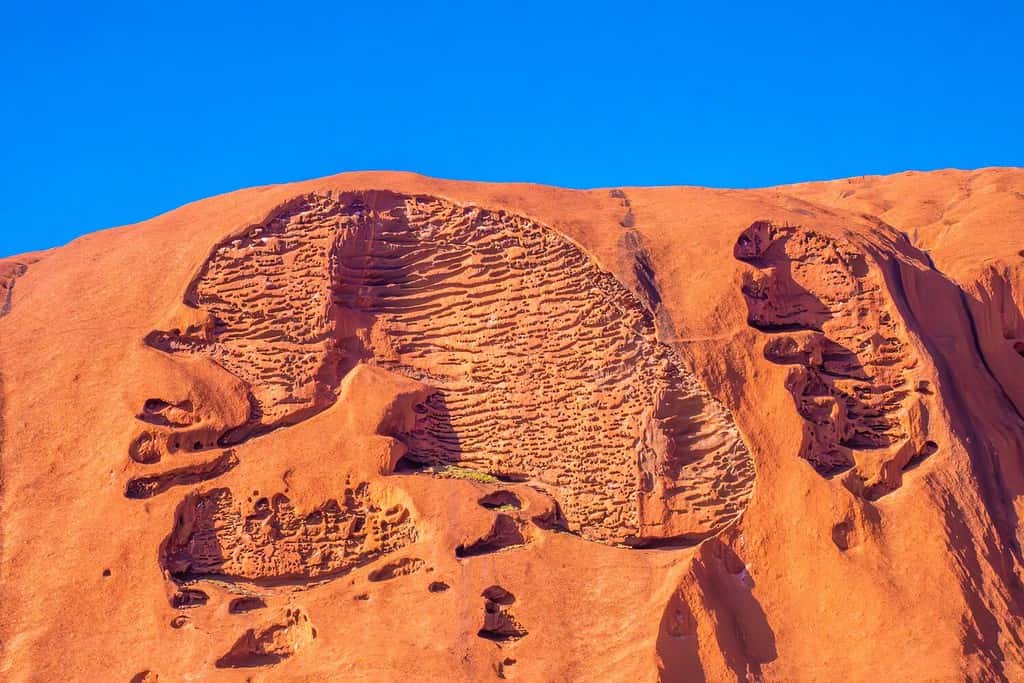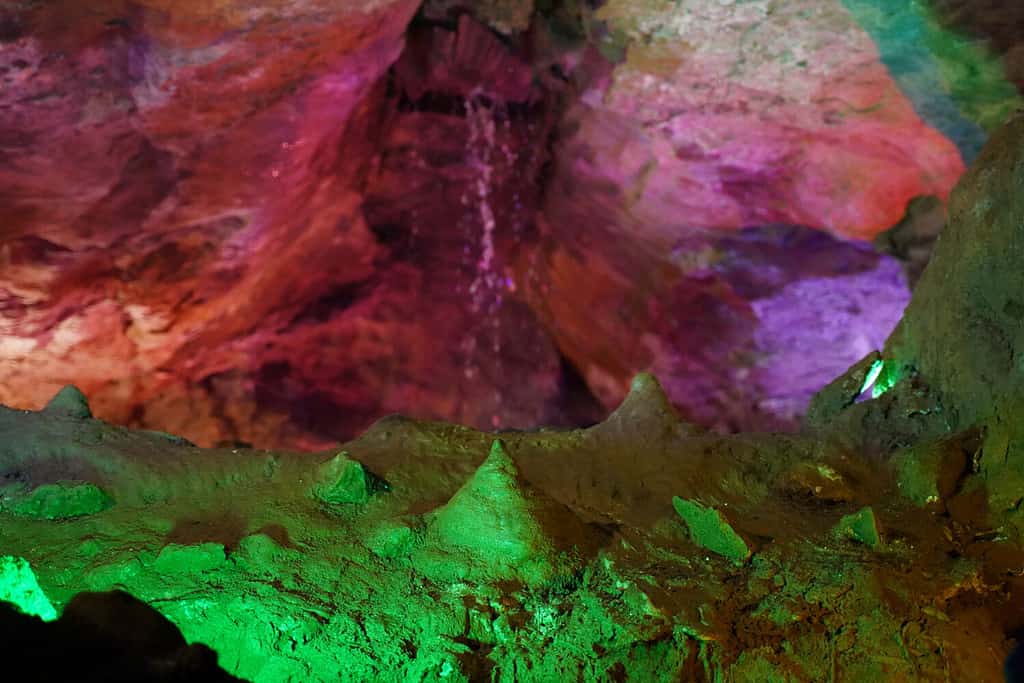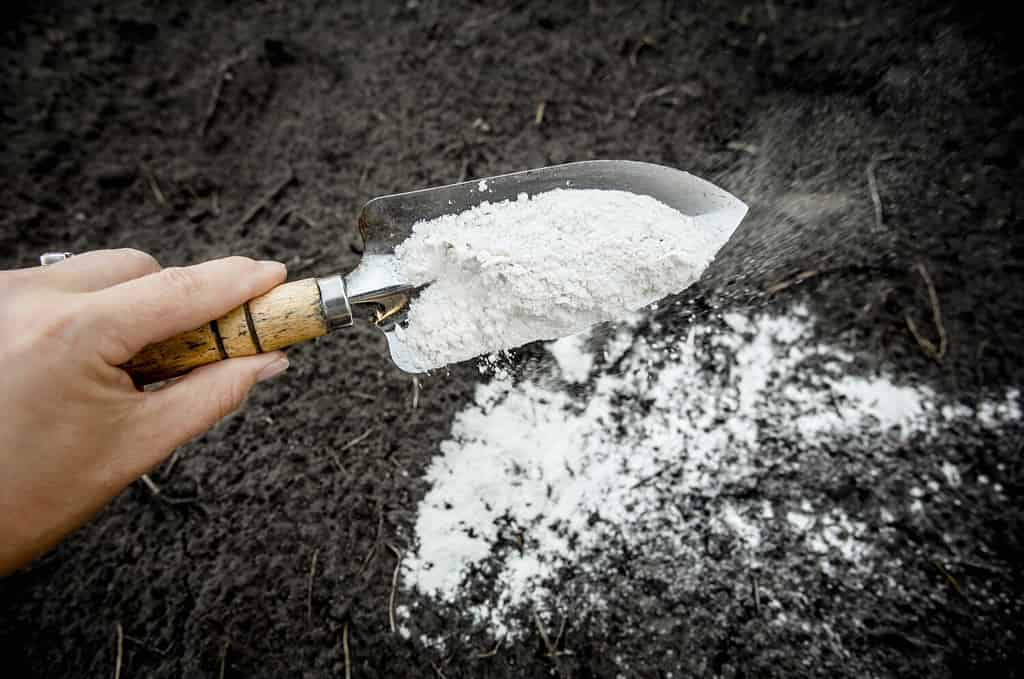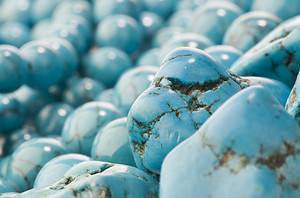Sandstone and limestone are common types of rock. But their key differences include what they’re composed of, how they’re formed, their physical properties, how they’re used, and where they’re found.
Before we discuss their differences, though, let’s note that the two stones do have one big commonality. Sandstone and limestone are both types of sedimentary rock. As you maybe remember from grade school science class, rocks are classified into three categories: sedimentary (formed in layers), igneous (formed from molten rock), and metamorphic (formed from other rocks that are changed by heat and pressure). Sedimentary rock forms when particles or minerals settle out of the air or water, accumulating in layers over time. As the weight of the layers increases, water is forced out and minerals are released, creating solid rock. The process is called lithification. Sedimentary rocks are the most common type of rock exposed on the earth’s surface.
How Are Sandstone and Limestone Formed?

Australia’s iconic Uluru (Ayers Rock) is composed of sandstone.
©LouieLea/Shutterstock.com
Within the sedimentary category, though, sandstone and limestone fall into different groups because of the material they’re composed of, and the different ways they form. Sandstone, as the name suggests, is made up of sand, that is, sand-sized grains of rock or mineral. (“Sand” actually defines the size of the grains, rather than the type of material). Sand deposits that form sandstone are usually brought together by rivers, waves, or wind.

Stalagmites and stalactites found in caves are formed from limestone.
©Kathy D. Reasor/Shutterstock.com
Limestone is composed mostly of the mineral calcite, a form of calcium carbonate. Most limestone comes from biological sources, especially marine life. The accumulation of shells, coral, algae, and other biological matter that contains calcium carbonate piles up and eventually becomes lithified. In some cases, calcium carbonate can precipitate directly out of water to form limestone.
Properties of Sandstone
The mineral makeup of sandstone can vary, but sandstone commonly includes quartz, feldspar, mica, and clay in its composition. Its variable content means sandstone can come in a range of colors, including shades of gray, yellow, red, and white. The rock’s hardness can also vary, from soft to hard depending on the mineral content. Sandstone that’s mostly quartz tends to be light-colored. Feldspar adds a pink or red color to the rock.
Uses of Sandstone

Sandstone is a popular choice for important public buildings, like this courthouse in Arizona.
©Chris Curtis/Shutterstock.com
Versatile and durable, sandstone is a valuable material for a wide range of projects, including:
Construction. The strength and durability of sandstone have made it a popular material for all sorts of construction and architecture. Its natural beauty makes it a frequent choice for building facades, especially important public structures like government buildings and museums.
Sandstone makes good flooring material too, as it has a slip-resistant surface, so you’ll find it on walkways and around swimming pools. Its range of natural colors and textures makes sandstone a versatile option for landscape features like paths, walls, as well as garden design.
Art. Sandstone is a workable stone that can be carved and shaped. Artists have used it since ancient times to create monuments and sculptures.
Industrial Use. Sandstone is used to produce glass, ceramics, concrete, cement, and other materials.
Some sandstone is porous, so it’s an important consideration in drilling for oil or water.
Where Is Sandstone Found?
Sandstone is a common form of sedimentary rock and can be found all around the world. Settings of sandstone deposits include rivers and streams, beaches, and deserts. Some sandstone deposits are considered natural wonders, such as the Navajo sandstone in the southwestern U.S., Australia’s Red Rock Canyon, and the cliffs of Petra, Jordan.
Properties of Limestone
Limestone usually forms in shallow, warm, marine waters, as shells and other biological material containing calcium carbonate accumulate over time. Small fossils or shell fragments can remain within the lithified limestone. That includes “microfossils,” the remains of tiny invertebrates. The fossil content of limestone can provide fascinating clues about past climate and the evolution of life on Earth.
Limestone’s color can vary widely, depending on what other elements are present with the calcium carbonite: from white to gray to brown, and sometimes has shades of blue, green, pink, or red. (Pure white limestone is actually pretty rare in nature.) Limestone is a soft rock, easily scratched. It’s soluble in water, so over long periods of time erosion of limestone can result in caves and sinkholes. Chalk is one familiar type of limestone.
Limestone subjected to high amounts of heat and pressure becomes marble.
Uses of Limestone

Adding limestone to poor soil can neutralize acidity and improve drainage.
©FotoHelin/Shutterstock.com
While its softness and solubility limit limestone’s application as a building material, its calcium carbonate opens up other possibilities, such as:
Agriculture. Limestone can be used in agriculture to neutralize soil acidity and add calcium and magnesium to support plant growth. Added to heavy clay soil, limestone breaks up the clay and enables better aeration and drainage.
Construction. Limestone mixed with soil makes a stable base for roads, buildings, and other structures. Limestone is used to make steel; powdered limestone is used in coal mines to absorb pollutants.
Industrial Use. Limestone is a material used to make quicklime, cement, and mortar. It’s a pigment and filler found in common products like toothpaste, paper, paint, and plastics. Powdered limestone adds calcium to cattle feed and to bread and cereals (for humans).
Where Is Limestone Found?
Limestone is most abundant in shallow marine areas. It’s a common rock found in deposits worldwide. Well-known sites of limestone include England’s White Cliffs of Dover, Australia’s Great Barrier Reef, and the USA’s Grand Canyon.
The photo featured at the top of this post is © deLoon/Shutterstock.com
Thank you for reading! Have some feedback for us? Contact the AZ Animals editorial team.






